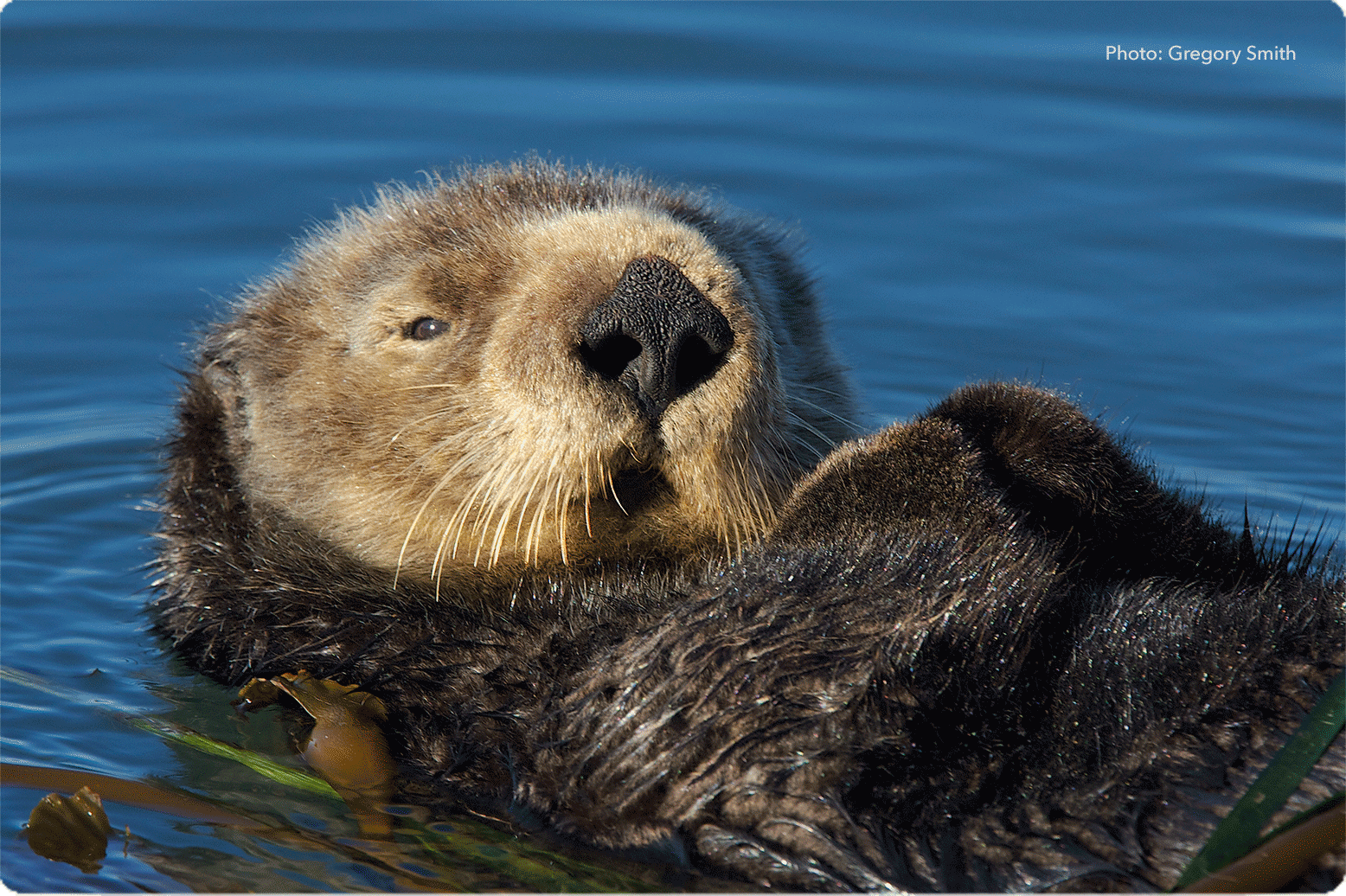
“Understanding the role of apex predators is essential for designing effective conservation policy and approaches,” states a report on the recovery of the Southern Sea Otter population, an initiative with far-reaching environmental implications.1 The Southern Sea Otter, undoubtedly an apex predator in estuarine systems, has been listed as a threatened species under the federal Endangered Species Act since 1977, a direct result of overhunting during the booming fur trade of the 18th and 19th centuries. The species is revered in Indigenous history, appearing in stories and symbolizing wealth, good times, and abundance, according to tribal members of the Confederated Tribe of Siletz Indians.2 Absent from Northern California and Oregon coastlines for more than a century, sea otters did not just symbolize wealth and abundance—they once played a crucial role in the abundance and health of the region’s ecosystems.
Today, these ecosystems are home to the European Green Crab, a globally invasive species that is effectively destroying the native plant and small prey populations and thus devastating ecological balance.3 However, the recent effort to recover the Southern Sea Otter population in Elkhorn Slough, an estuary in California, has established that sea otters are effective in reducing this invasive species population and therefore effective in improving and maintaining the health of surrounding environments.4
Following this effort, local communities have similarly been working to reestablish a population of sea otters in order to restore ecological balance and create resilience against environmental factors that are detrimental to coastal areas. In late 2024, the National Fish and Wildlife Foundation awarded a $1.56 million grant to the Confederated Tribe of Siletz Indians to fund their project Bringing Xvlh-t’vsh Home: Indigenous-led Planning for Sea Otters’ Return to the Oregon and Northern California Coast.5 This project represents a significant ecological restoration effort, blending traditional ecological knowledge with modern conservation science to reintroduce sea otters to the region after nearly a century of absence. The Siletz Tribes, whose ancestral territories span much of the Oregon coast, maintain deep cultural connections to sea otters. A Tribal member explained how their ancestors understood sea otters to be vital to a healthy ecosystem, as they serve an important role in restoring kelp forests, and with healthy kelp forests, coastal erosion is buffered as well.6
This reintroduction program follows decades of scientific research and community consultation. Biologists from the Siletz Natural Resources Department collaborated with state wildlife agencies, the U.S. Fish and Wildlife Service, and the Elakha Alliance to develop protocols for capturing, relocating, and monitoring sea otter populations. A small founding population, carefully selected for genetic diversity, was transported from stable Alaska populations to protected release sites along the Oregon and Northern California coasts.
Ecologically, wildlife reintroduction programs like this one help repair damaged ecosystems by restoring natural processes. When keystone species like sea otters return, they trigger cascading positive effects throughout the food web, some of which are already becoming apparent in areas like Elkhorn Slough.7 In coastal environments, sea otters control sea urchin populations that would otherwise decimate kelp forests. As these forests recover, the results create a habitat for countless marine species, thus increasing biodiversity, as well as enhancing coastal resilience to environmental factors by sequestering carbon and buffering coastlines against wave action and erosion.
These efforts to reestablish sea otters along the Oregon and Northern California coast provide valuable scientific insights into keystone species recovery dynamics that can positively impact the effectiveness of future reintroduction programs by offering practical ways to rebuild biodiversity, decrease destructive effects of invasive species, and improve the resilience of coastlines. For the Siletz Tribes, this effort represents more than ecological restoration—it's cultural revitalization.
1 Rikke Jeppesen et al., Recovering Population of the Southern Sea Otter Suppresses a Global Marine Invader, 27 Biological Invasions 33 (2025).
2 Brian Bull, Siletz Tribe Gets $1.56 Million to Reintroduce Sea Otters to Coastal Waters, Or. Pub. Broad. (Jan. 27, 2025).
3 Jeppesen, supra note 1.
4 Elkhorn Slough Team, Endangered Sea Otters Keep Invasive Green Crabs in Check at Elkhorn Slough, Elkhorn Slough Nat'l Estuarine Rsch. Rsrv. (2024).
5 Bull, supra note 2.
6 Id.
7 Elkhorn Slough Team, supra note 4.











